B2B Brand Positioning for Manufacturing Services
Map your manufacturing brand positioning to sales and marketing goals.

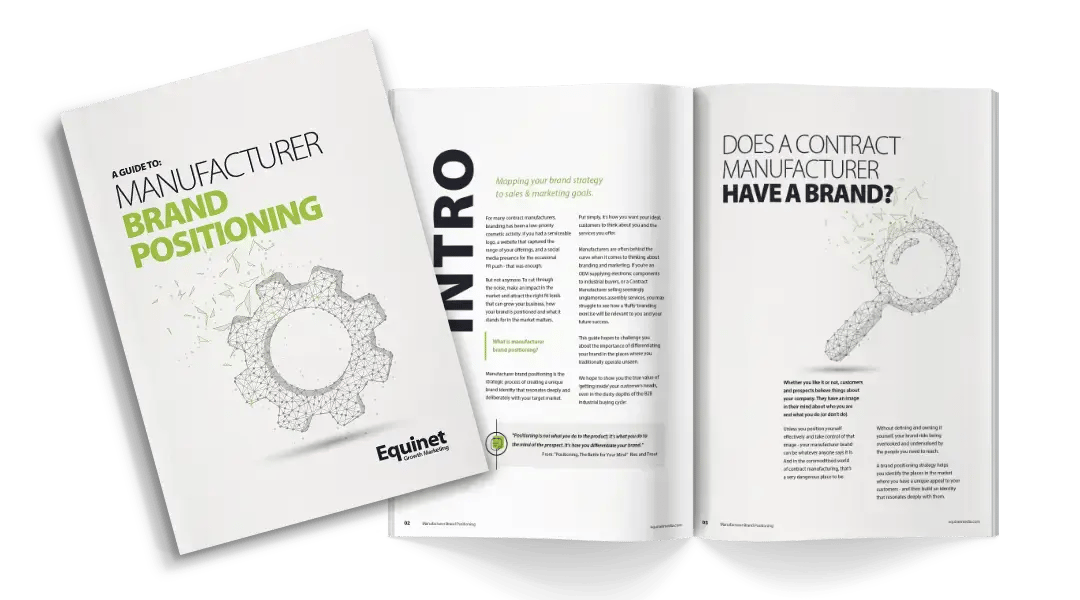
No time to read now?
What is manufacturer brand positioning?
Manufacturing brand positioning is the strategic process of creating a unique brand identity that resonates deeply and deliberately with your target market. Put simply, it’s how you want your ideal customers to think about you and the services you offer.
Manufacturers are often behind the curve when it comes to branding and marketing. If you’re an OEM supplying electronic components to industrial buyers or a Contract Manufacturer (CM) selling seemingly unglamorous assembly services, you may struggle to see how a ‘fluffy’ branding exercise will be relevant to you and your future success.
This guide highlights the importance of differentiating your brand in the places where you traditionally operate unseen.
It shows you the true value of 'getting inside' your customers' heads, even in the dusty depths of the B2B industrial buying cycle.
Why is branding important for contract manufacturers?
Whether you like it or not, customers and prospects believe things about your company. They have an image in their mind about who you are and what you do (or don’t do).
“Your brand is what people say about you when you're not in the room.”
Jeff Bezos, Founder of Amazon
Unless you position yourself effectively and take control of that image - your manufacturing brand can be whatever anyone says it is. And in the commoditised world of contract manufacturing, that’s a very dangerous place to be.
Without defining and owning it yourself, your brand risks being overlooked and undervalued by the people you need to reach.
“If you don’t differentiate your offering, the only thing left to compete on is price - and that’s a race to the bottom.”
April Dunford, Author of Obviously Awesome
A brand positioning strategy helps you identify the places in the market where you have a unique appeal to your customers - and then build an identity that resonates deeply with them.
Positioning your brand in a crowded market
The contract manufacturing sector is booming. More OEMs are looking to achieve economies of scale in procurement and production while freeing up resources to focus on new products and markets.
Yet for decades, contract manufacturers have been positioned ‘beneath the radar’, operating as the silent engines of growth in the sector. Too often, this has left them stuck in an undifferentiated middle, part of a pack of closely matched suppliers struggling with commoditisation.
Fighting for air in the undifferentiated middle?
Competition in the market is intense. OEMs often have numerous manufacturing partners, they can play off each other to drive down costs and hedge their bets. The risk of becoming lost in the undifferentiated middle is a real threat.
Research into the Electronic Manufacturing Service (EMS) sector by VMR has shown that retaining clients is particularly hard when the players in the marketplace all seem the same.
When they can switch rapidly and easily between suppliers, OEMs need compelling reasons to stay loyal rather than beat their partners down on price to achieve their competitive advantage.
Without a clear brand identity and value proposition, CMs can easily end up undervalued and overlooked by their most important partners.
EMS suppliers are feeling the squeeze:
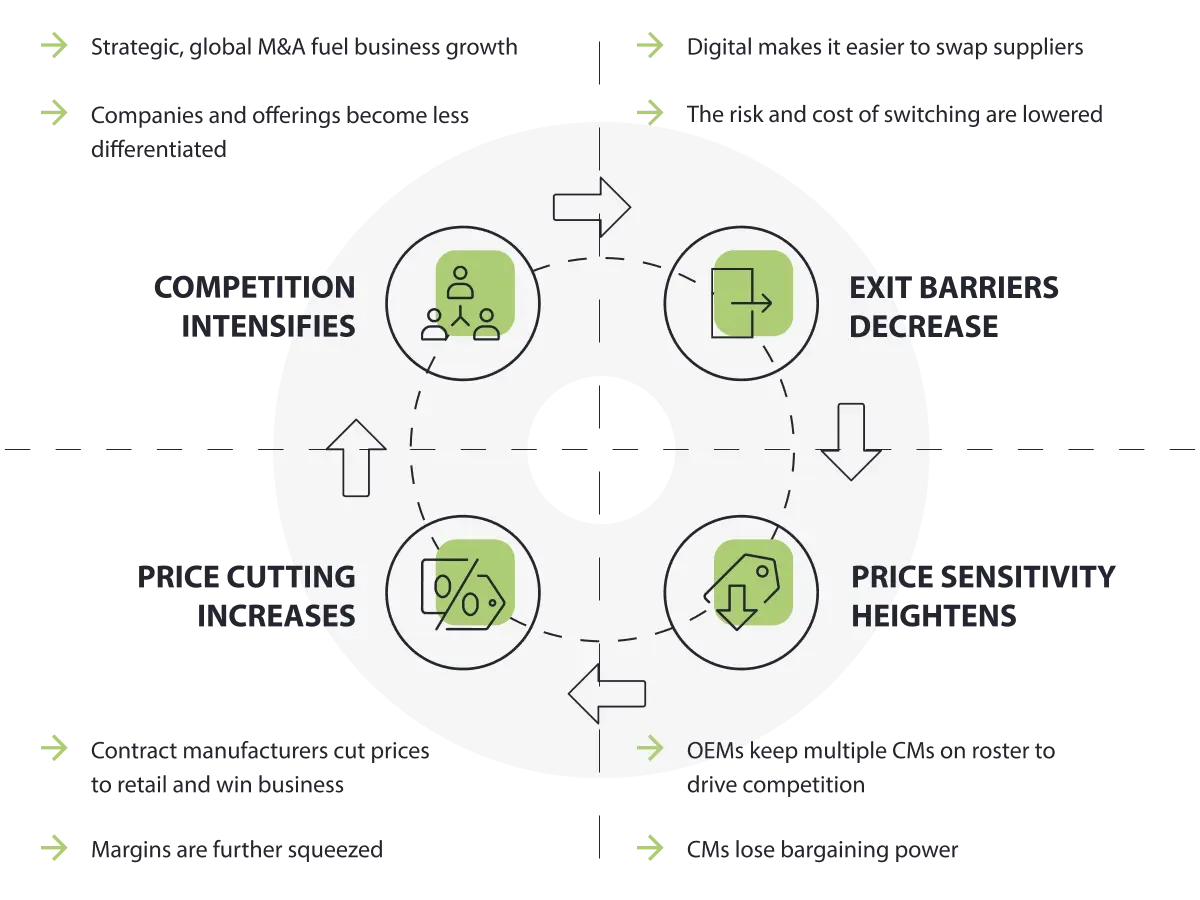
There’s so much in this market that CMs can’t control - from freak weather events destroying supply chains to currency fluctuation. But there’s one thing they can control - their brand positioning strategy.
Ultimately, where you are positioned in the market is key to being discovered by right-fit leads and forming the long-term partnerships that will see you thrive in the future.
- Effective brand marketing can establish that emotional connection with your prospects and customers, which generates more loyalty, more sales and more profit.
- Focusing on brand can help you tell a story that sets you apart from competitors and convinces the right people to work with you and continue buying from you.
Probably the most critical element of cutting through in this crowded market, then, is brand positioning – how CMs differentiate themselves in the eyes of customers and prospects to achieve sustainable growth.
What good brand positioning looks like in manufacturing
Some of the most recognisable contract manufacturers in the world have invested heavily in their brand positioning. And it shows:
- Jabil presents itself as a global manufacturing solutions partner, known not just for production capacity but for its innovation, supply chain orchestration, and design capabilities.
- Foxconn, widely known as Apple’s manufacturing partner, has repositioned itself in recent years as a diversified smart manufacturing and industrial AI provider, aligning its brand with the future of electronics manufacturing.
- Lonza, in the life sciences sector, leverages its scientific authority and regulatory expertise to position itself as a strategic partner for pharma and biotech firms looking to scale.
Despite serving different sectors and customer types, Jabil, Foxconn, and Lonza all demonstrate the core elements of strong brand positioning:
- They speak to a clearly defined audience with a well-understood need.
- They focus on value, not just capability - positioning their services in the context of the customer’s goals.
- They make intentional choices about how they present themselves - and they stay consistent.
Good brand positioning isn't about being louder, or flashy. It’s about being clearer, more relevant, and easier to choose.
Creating a digital presence that reflects your brand
Even the most carefully defined brand positioning will fall flat if your digital presence doesn’t reflect it.
In today’s B2B buying journey, especially in technical, high-consideration sectors like contract manufacturing, the majority of research is done long before anyone speaks to your sales team.
83% of B2B buyers prefer a digital-first experience during their buying journey.
Gartner
This means your website, LinkedIn presence, search visibility, and even your email signatures are doing the heavy lifting of brand building, whether you intend them to or not.
What buyers see online shapes how they perceive you:
- Your website should clearly articulate your value proposition, sector focus, capabilities, and case studies. If it’s outdated, unclear, or overly generic, buyers may assume the same of your services.
- Your messaging consistency across digital channels builds trust. If your LinkedIn profile says you’re a “strategic partner to OEMs” but your website reads like a parts catalogue, there’s a disconnect, and buyers notice.
- Thought leadership and content marketing are powerful tools for reinforcing expertise and specialism. Case studies, blog posts, and white papers show how you solve problems, not just what you produce.
So what does a strong digital presence look like?
Let’s take a few examples from earlier:
- Jabil - Their website features customer-centric messaging, video storytelling, and real-world innovation use cases. It reflects their scale and industry leadership.
- Foxconn - Their website and digital content highlight a shift towards smart manufacturing, AI, and EV innovation, reflecting a move beyond high-volume production to future-focused solutions.
- Lonza - Their website, publications, and webinar content create an impression of scientific authority and operational trust, aligning perfectly with their life sciences audience.
The goal is to create absolute clarity, consistency, and alignment between who you are and what your buyers see and feel online.
How to define your brand positioning
Your market, your offering and your business strategy will determine the limits of where you can compete – but here are some general, and simplified examples of brand positions you could assume.
As a contract manufacturer, you may want customers to think of you as:
- The cheapest
- The highest quality
- The easiest to engage
- The most capable
- The most efficient
- The greenest
A perception of your manufacturing brand as the cheapest might help win more business, but it’s the fastest way to damaging price wars that only a few will survive.
Instead, work out the position where you have the greatest chance of building brand equity to maximise your growth potential.
The aim of a positioning exercise is to define where you want to be in the marketplace and ensure your ‘brand reality’ aligns with your ‘brand image’.
This position is the sweet spot where three things intersect:
- Your customers’ needs
- Your unique capabilities
- Your competitors’ weaknesses
In other words, the uniquely fertile ground where you can grow.
How to position your brand for growth is a 3 step process:
- Define your Ideal Customer Profile and buyer personas
- Analyse your competitors' offerings
- Create your value proposition
Define your Ideal Customer Profile (ICP)
A customer profile is about the type of companies you want to attract. They are essential if you are looking at Account-Based Marketing (ABM) but are relevant to all B2B businesses.
You want to create a description of a company with all the qualities that would make it the best fit for your solutions.
When you define a customer profile, you might look at the following characteristics:
Company size: How big is your ideal customer? How much revenue do they turn over, and how many people do they employ?
Geography: Are there regions that are especially important to you? Are there logistical reasons that mean there is a finite area you can serve?
Legality: Are there legal reasons that limit potential customers? Such as age, location, or government or regulatory restrictions?
Industry: Which industries do you want to work with or perhaps have the most experience in? Which industries do you want to avoid for any reason?
Product or service limitations: Do you have a service level agreement (SLA) with your customers to meet a specific response time? If someone needs a quicker response, can you guarantee you’ll be able to meet that demand?
This isn't a comprehensive list by any means, but it may prove a good starting point when defining your Ideal Customer Profile. A lead needs to have these qualities to be able to buy from you. You can use this profile when qualifying leads to ensure that sales time is not wasted on leads that are not likely to buy.
Ideal Customer Profiles are focused on the fit of the account and don't look at the nitty-gritty of the individual buyers within that business. Once you have identified business accounts that fit your customer profile, you want to start thinking about who your sales reps are talking to and who is responsible for actually making the purchase.
Businesses that fit your Ideal Customer Profile are comprised of these individuals who all hold different titles and have varied product/service knowledge, and levels of experience. These are the buyers you need to profile in your buyer personas.
Define your buyer personas
Buyer personas are profiles of the people to whom you need to sell at the companies you are targeting.
You can use existing buyers’ profiles to base these on. But there are a couple of dangerous assumptions at work here. Firstly, these are the customers you have – not necessarily the ones you want – or the ones you might aspire to have. They may have got you here – to your current level of sales – but will they help you develop and grow your business?
Secondly, are they typical? You may have some outliers, and basing a buyer persona on them could be disastrous.
Developing a buyer persona requires a deeper level of thinking. Without the broader picture, you can't possibly know which aspects of your customers are genuinely unique to them and which elements are the ones they share with other potential clients.
It's also essential to go beyond the simple demographics to understand your prospects' challenges, fears, and aspirations. You need to identify their pain points – what do they struggle with? What elements of their weekly tasks are difficult, tedious or challenging? What other people in their world might be helping or frustrating their work?
Reverse-engineering buyer personas from existing customers doesn't trigger the same thought processes or the same rigorous research and evaluation – it can be useful, but only as an input into more in-depth buyer persona development.
Conduct competitor analysis
Look around your sector. Identify who your competitors are. What do they do well? Where do their strengths lie? What do their customers value about them?
Here are a few questions to help you build a picture of your competitors' current positioning in the marketplace and where you fit in relation to them:
- Who are your direct and indirect competitors? Who might be a future threat?
- What do they claim about the products and services they offer? What data do they use to prove their claims? What features or benefits do they emphasise in their messaging?
- What marketing channels do they use? Which of their strategies appears most successful?
- What image of their offering, their employees, and their business do they project? What do their mission, vision and values statements promise?
- Can you work out the Ideal Customer Profile and the buyer personas they are targeting? Why do their customers choose them? You might know because you’ve lost deals to them.
- What do their customers say about them in business and product reviews? How does their market interact with them on social media?
Now, consider the unique strengths and weaknesses of these rival offerings. Where are the gaps in their armoury? Where are customers not being served well? Where are they ignoring the problems and complaints of the people they serve?
The clues to successful brand positioning will lie in understanding these weaknesses and the opportunities they present to you.
Create your value proposition
Once you have understood the audience you want to address and their current choices in the marketplace, you can figure out what it is about your company and your offering that can resonate with them in their search for a contract manufacturing company.
This is your value proposition.
What specific value do you bring to your customers when they engage your contract manufacturing company? What problems and pains does your company help your customers overcome? How does your company succeed in meeting their needs where others fail?
Let’s revisit some of the contract manufacturers mentioned earlier and consider what their value propositions might look like, based on their market messaging and positioning:
Jabil
"We help the world’s leading brands bring innovative products to market - faster, smarter, and at scale - through global engineering, manufacturing and supply chain expertise."
Why it works: Emphasises speed, innovation, and global scale - all things their clients care about.
Foxconn
"From smart factories to cloud-edge integration, we deliver next-generation electronics manufacturing driven by AI, automation, and innovation."
Why it works: Speaks directly to customers in fast-evolving tech sectors. Reinforces a shift from legacy high-volume production to future-facing smart manufacturing.
Lonza
"We partner with pharmaceutical and biotech companies to bring treatments to market with speed, compliance, and scientific rigour – at every stage of the product lifecycle."
Why it works: Appeals to trust, compliance, and scalability - core values in pharma and life sciences outsourcing.
There are lots of tools that can help you identify your customers’ fundamental needs and map them against your products and services to define your unique ‘value proposition’.
The value proposition canvas (invented by Strategyzer) is a simple but powerful tool to help with this process. And it starts with creating a value map and a customer profile.
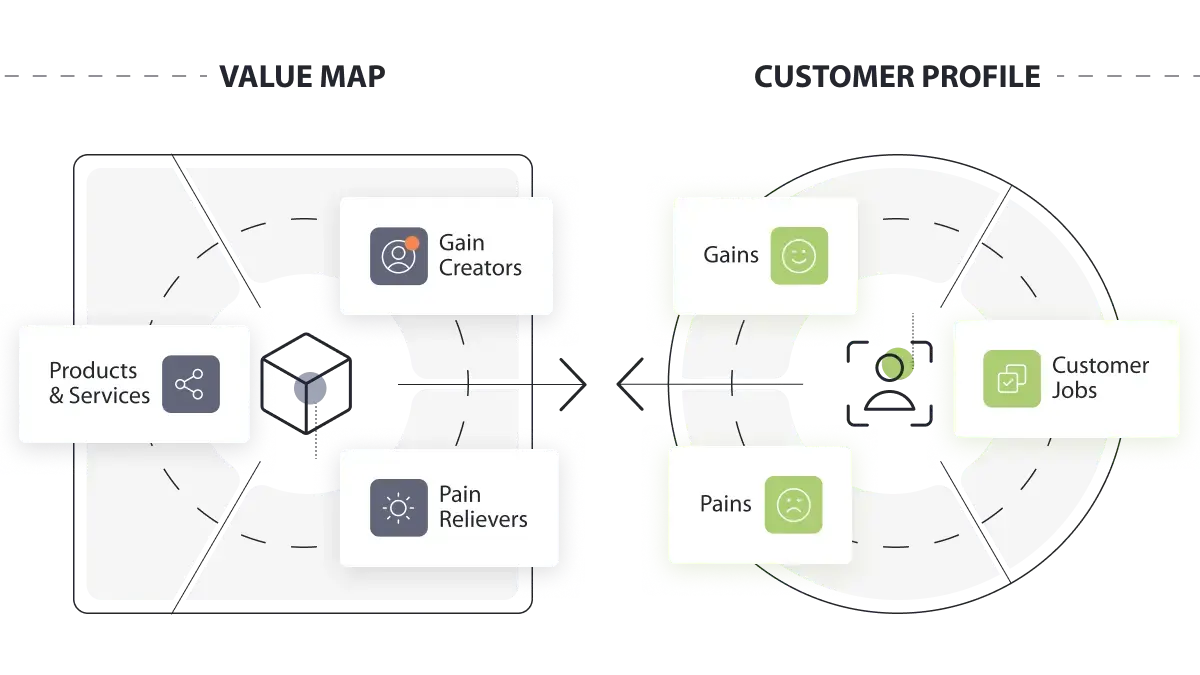
Complete the value proposition canvas
1. Start with the customer
“Start from the customer and work backwards” Jeff Bezos
Understanding your customer is fundamental to any manufacturing branding strategy. And it all starts with their ‘jobs to be done’ (JTBD).
‘Jobs to be done’ are what your customers (i.e., buyer personas) want to achieve when they engage your business. Remember, this is about solutions, not product features. As the old adage goes people buy holes, not drills. Jobs to be done’ can be functional, social and emotional - recognising the full range of motivations that trigger a customer’s buyer's journey.
What might they look like for a contract manufacturing prospect?
| ‘Jobs to be done’ for an OEM |
Pains involved in completing their jobs | Gains from completing these jobs successfully |
|---|---|---|
| Deliver products on time to fulfil sales obligations | Cost of factory upkeep | Meeting more customer deadlines and quality targets |
| Keep correct components in stock to fulfil orders | Stress of managing and recruiting factory workforce | Protecting customers from supply chain disruption |
| Maintain quality levels to meet customer and regulatory requirements | Maintaining adequate supply chains | Balancing production/R&D needs to meet new customer demand |
| Win more right-fit clients to drive sustainable growth | Difficulty opening up new markets around the world | Focus on sales and marketing drive to increase revenue |
2. Fill out your value map
As you fill out this section of the canvas you can begin to map the ways your specific product alleviates identified customer pains and delivers required customer gains.
For contract manufacturers, these might include the way:
-
End-to-end services help customers solve for fragmented supply chains
-
Your software offers customers transparency across the supply chain
-
Outsourcing production helps customers focus on R&D and brand-building
-
Value engineering services improve product quality while reducing costs
-
DFX services help customers avoid delays in production and delivery
The completed map shows if you have a ‘good product fit’ against the needs of your ideal customers. If not, you may need to tweak and shape your offering to more perfectly answer customer needs.
When you understand your customers ‘jobs to be done’ you can see more clearly how you can position your services to speak to their specific pain points and end goals.
This is the position where you become more than just a commodity to be haggled over. It’s a place where you can represent something singular and powerful in the minds of your prospects and customers. It’s your competitive advantage.
Position your brand for growth
Armed with your competitor analysis, your customer profile and your value map, you can clearly see the position in the market where you will be able to thrive. This is the place where you can avoid the dead end of price wars with equally matched rivals - or being forced into verticals where you can’t possibly compete.
Instead this is the clear ‘blue ocean’, the place where you can successfully grow your brand away from predation by competitors, confident in the value you alone can offer your customers:
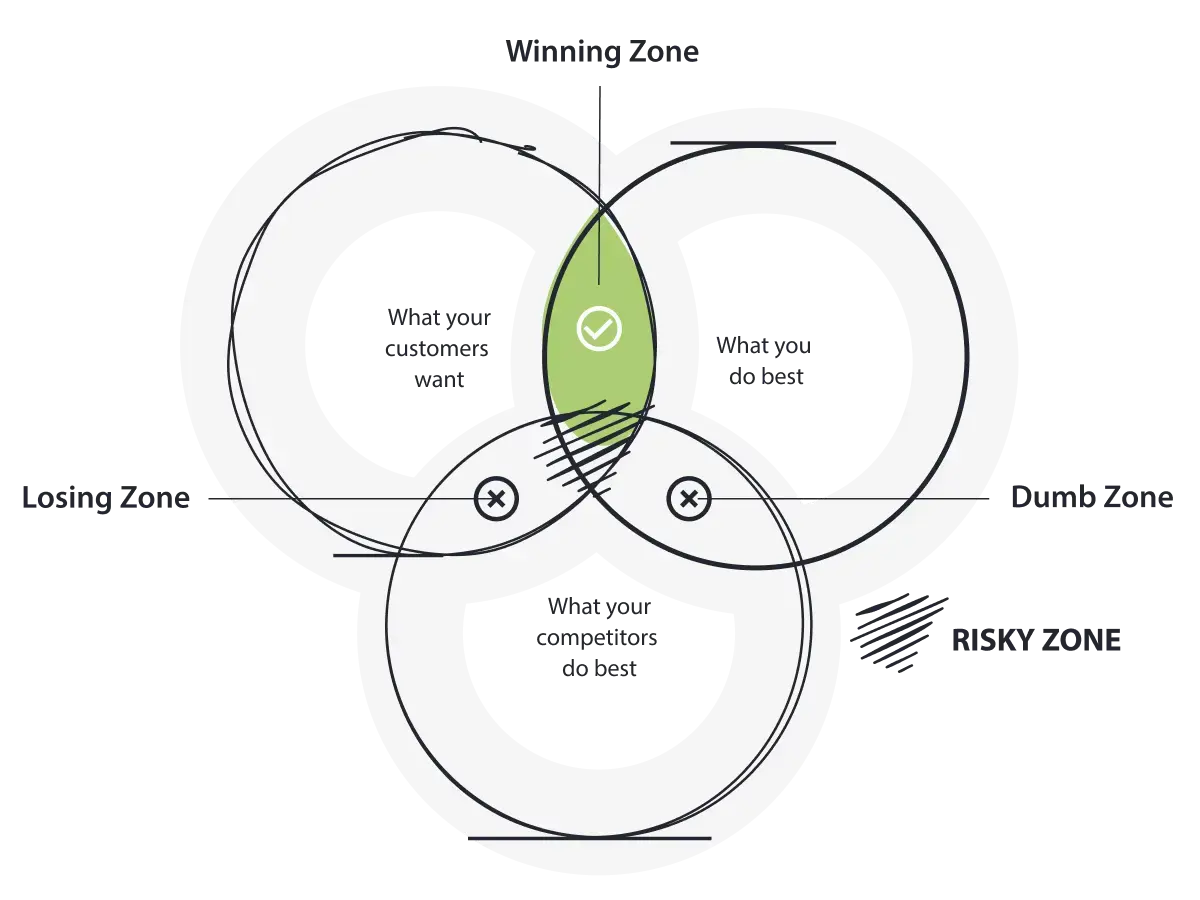
Now you need to convert this insight into an expression of your brand position that can underpin all your sales and marketing efforts.
Only 40% of B2B organisations said their sales reps had a ‘strong understanding’ of their company’s differentiation. (Source: Bain)
How to write a brand positioning statement
The ‘brand positioning statement’ is a paragraph that summarises the unique value you bring to your customers, your point of differentiation, and the reasons to believe your claim.
It’s a formula that sets out your target position in the marketplace that you can share with your team and use to validate all of your branding work.
According to Graham Robertson, there are four elements that make up a brand positioning statement: It's a description of who you serve, where you operate, where you will win and why customers should believe you.
Let’s explain this a little more.
Here’s an example of a brand positioning statement for Coca-Cola created by a lead copywriter at HubSpot.
"For individuals looking for high-quality beverages, Coca-Cola offers a wide range of the most refreshing options — each creates a positive experience for customers when they enjoy a Coca-Cola brand drink. Unlike other beverage options, Coca-Cola products inspire happiness and make a positive difference in customers' lives, and the brand is intensely focused on the needs of consumers and customers."
Note that it breaks down into the simple formula outlined above, describing their target market first, their unique positioning, and the evidence to support their claims.
.png)
Brand positioning statement examples for contract manufacturers
Need some inspiration for your own brand statement? How about this one for a fictitious medical device manufacturer who offers a complete end-to-end service to their customers:
For medical device OEMS, Medcare is the leading end-to-end design and manufacturing partner in the UK. We overcome fragmented supply chains to bring life saving devices to market faster. In the last 10 years we have helped hundreds of medical innovators move seamlessly from ideation to production without missing a beat.
Or how about a packaging brand that is bringing unique, sustainable packaging technology to a mainstream market:
For FMCG food brands looking to package their products in a cost-effective and environmentally friendly way, Wrap helps protect the planet with cutting-edge biodegradable wrapping. Our customers are leading a sustainability revolution that is actively reducing landfills and pollution.
The brand positioning statement helps everyone in your business appreciate how you are differentiated in the marketplace and the unique benefit you have for customers and, even, the wider world. It contextualises your offering and tells your people why they should believe in what you do.
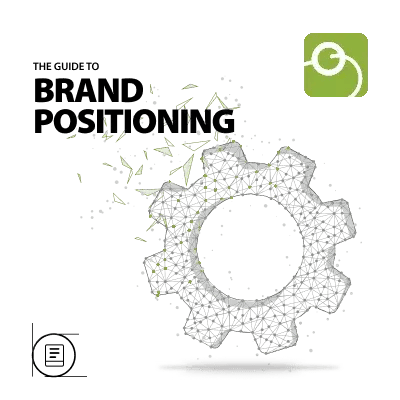
Want to save a copy? We'll send a copy direct to your inbox.

























